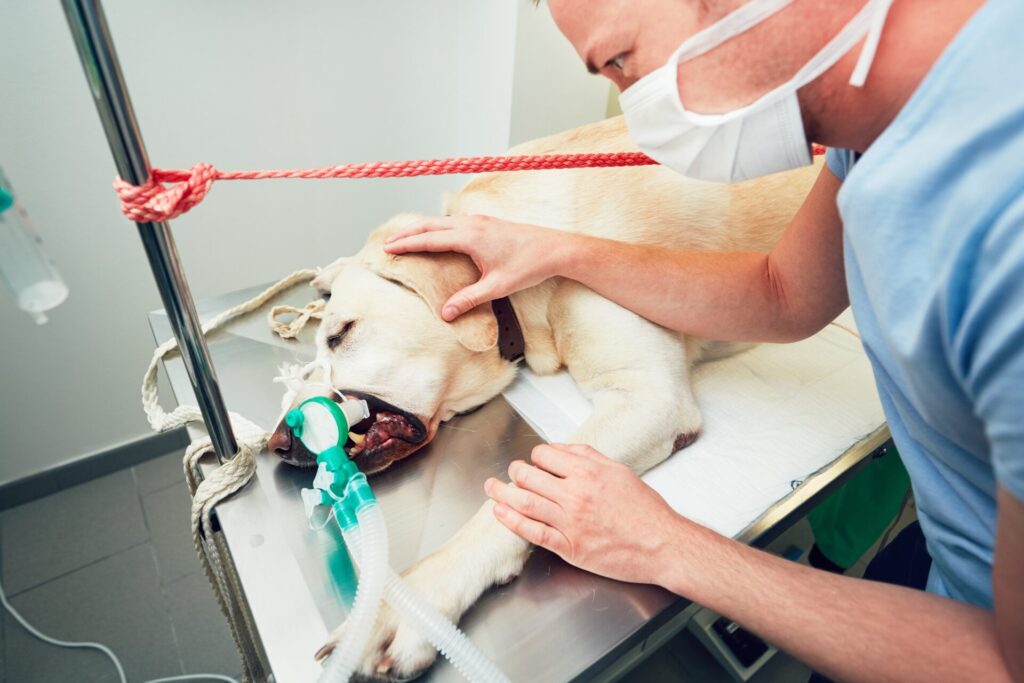Before investing in knee surgery for your dog, it would be wise to look at the statistical information surrounding the success rates of each specific type of surgery.
Hind knee tears in dogs is the leading cause of lameness and pain for domesticated canines, and according to NIH, there is no absolute gold standard to treat this injury of epidemic proportions. (1)
There are variable factors that determine the success rate of dog knee surgery that may have little to do with the operational procedure itself, such as post-operative care, which makes all case studies on the subject not entirely deterministic.
Most research on the success rates of dog knee surgery are based on the dog’s health one year after surgery, looking at the veterinarian records as well as owner surveys. Even reputable research institutions such as NIH, still use these relatively subject means of gathering the data.
A Case Study: TPLO, Tight Rope, and TTA
“Long-term outcomes for TPLO and TR were superior to TTA based on subjective client and DVM assessments. Each technique was associated with a high long-term success rate with TR showing the highest safety-to-efficacy ratio.” (1)
Based on a three year long study at NIH, all three types of surgery: TPLO, TTA, and TR were under surveillance and the data that came in clearly demonstrates that after one year of the surgery taking place dogs who had undergone TR and TPLO surgery experienced more mobility, less pain, and were generally more active than those who experienced TTA surgery.
The results from the research demonstrate an overwhelming favorable outcome for TR and TPLO surgery:
“TPLO (n = 65), TR (n = 79), and TTA (n = 18). TTA was associated with significantly (P < .03) higher rates of major complications and subsequent meniscal tears than TPLO and TR, and TPLO had significantly higher rates of major complications and meniscal tears than TR. Percent of function >1 year after surgery was 93.1% + 10.0% for TPLO, 92.7% + 19.3% for TR, and 89.2% + 11.6% for TTA.” (1)
Tightrope surgery had a success rate of 79%, TPLO surgery had a success rate of 65%, conversely TTA surgery only had a success rate of 18%.
The studies continues to state the following:
“The highest levels, frequency, and severity of pain were noted in TTA cases, however, no significant differences were noted among groups.” (1)
This particular study did not follow longer term results, nor did it examine traditional cruciate repairs in dogs.
Further research demonstrates that the primary factor that contributes to dogs suffering after surgery is infection at the point of incision. This means that regardless of how successful the actual procedure is, or how much money you spend to have the most qualified doctor work on your dog’s knee, if the incision wound is not cared for properly post operation, it can infect and lead to a plethora of issues for your dog.
Pre-Existing Osteoarthritis In Dogs Before The Tear
Well researched evidence suggests that in many dogs who have experienced full or partial tears to their hind knee, were already susceptible to injury as the joint itself was weakened by osteoarthritis. There are significant non-surgical options for dog owners to prevent the need for surgery in the first place.
Research conducted by the NIH recommends that to ensure the success rate of any dog knee surgery further care must be taken to improve the overall health of the dog’s joints through better nutrition, and supplements. The dogs that experienced re-injury post operation were generally found to have weakened connective tissues in the knee joint prior to the operation. (1)
Whether as a means of prevention or as a post operative treatment, it is essential that dog owners seek out appropriate vitamins and minerals to strengthen connective tissues in their dog’s joints.
The Surgeon You Choose Matters, If You Cannot Afford A Board Certified Surgeon Stick With A Traditional Knee Surgery
The overall success rate of dog knee surgery does depend largely on the skill of the individual performing the operation, particularly with procedures such as TPLO, Tight Rope, and TTA, the skill level of the surgeon wildly impacts the success rate of surgery.
While statistically speaking TPLO and Tightrope surgery have the highest success rate. If you cannot find a veterinarian who can reliably perform these surgeries then it is best to go with the lower cost traditional surgery.
This means choosing lateral suture or Extracapsular Repair, while this is both the oldest and most affordable type of dog knee surgery, has the highest rate of secondary rupture. During this surgery, no structural changes are made to the knee joint itself, but rather, additional support is inserted into the knee. Eventually this support wears down and another surgery will be necessary.
On a positive note, it will be easier to find a reliable veterinarian who can perform this surgery, so while not always the highest long term success rates, you can be sure that most vets know what they are doing. Whereas TPLO, TTA, and Tightrope surgery do require a specialist.
Evaluating The Success Rates OF Dog Knee Surgery
Statistically speaking the safest type of dog knee surgery is TPLO or TIghtrope if you can afford these options and find an experienced veterinarian to perform the surgery.
As the owner the importance of keeping the incision point clean and free from infection cannot be underestimated. Furthermore, many surgeries may be prevented by keeping your dog’s joints healthy to begin with, and certainly maintaining healthy joints after surgery will help to ensure the success rate of the surgery.
If you cannot afford or find a doctor who can perform TPLO or tightrope surgery, then traditional Extracapsular Repair is an option, but be prepared to have to re-do the surgery every few years, potentially.
Yes, most dog knee surgeries can be successful, but the success rate will depend not only on the skill of the dog, but how actively the owner is involved with post operative care, and the ongoing preservation of the knee joint in their dog.
Sources Cited:
- https://pubmed.ncbi.nlm.nih.gov/23432511/
- https://pubmed.ncbi.nlm.nih.gov/28636056/
- https://www.ncbi.nlm.nih.gov/pmc/articles/PMC6411761/
- https://www.ncbi.nlm.nih.gov/pmc/articles/PMC6411761/
- https://topdoghealth.com/library/orthopedic-surgery/articles-surgery/dog-acl-surgery-lateral-suture/

